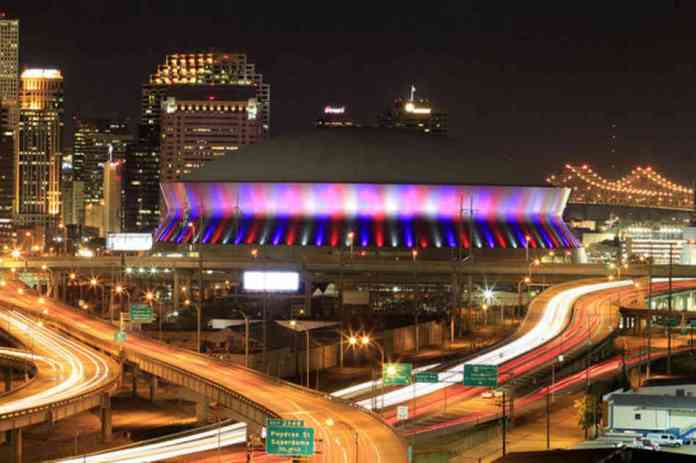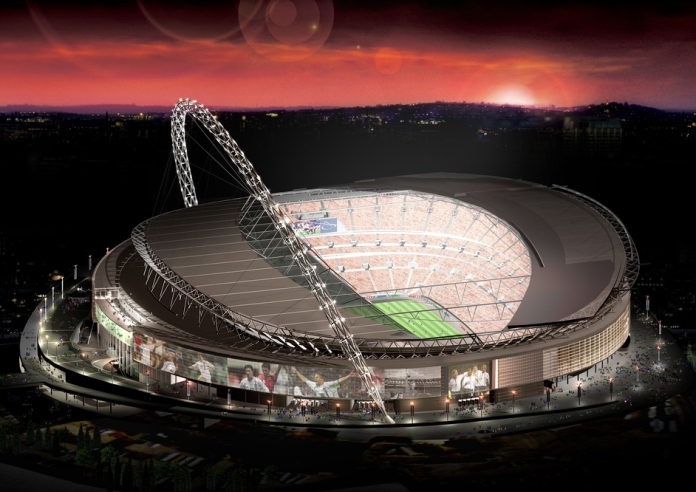Sporting complexes must be able to withstand tough weather conditions, hold masses of screaming fans, and, in some cases, be built in a few years span. Aluminum is used in building such structures because its lightweight capabilities lead to greater flexibility while minimizing the expenditure on foundations. It is durable enough to withstand feet of snow falling in Baltimore, Maryland during Ravens games where the stadium packs 70,000 plus fans decked out in black and purple as well as the beating sun’s ultraviolet rays in multiple stadiums used in the 2014 World Cup games hosted by Brazil where fans from across the global gather to show off their patriotism.
After devastation struck in New Orleans, Louisiana, many locals were packed into the Louisiana Superdome as a “shelter of last resort” for thousands of New Orleans residents unable to evacuate in August 2005 when Hurricane Katrina devastated the city. Renovations occurred after to show the world that the city is capable of battling and overcoming any obstacle the world throws at them, on and off the field. The transformation into an ultra-modern stadium was made possible by more than 40,000 square feet of aluminum that was turned into 16,000 bronze-hued anodized aluminum panels which now give the Superdome its iconic structuring.
Many sporting stadiums have similar stories that go deeper than the material used to build them and here are a few examples.
The Maracanã stadium in Rio de Janerio, Brazil housed 199,854 fans, being the world’s largest stadium by capacity, during the 1950 FIFA World Cup in which Brazil was defeated by Uruguay 2-1. To prepare for the 2014 World Cup, more than 50 metric tons of extruded aluminum was used to refurbish and modernize the stadium. The Maracanã Stadium and Aztec Stadium in Mexico City are the only two venues ever to host two World Cup Finals.
The Wembley Stadium in London, England seen today is a new structure that opened in 2007 to replace the earlier Wembley Statium that was constructed in 1923. The previous model was sometimes referred to as “The church of football” or more officially known as “the Empire Stadium” where major rugby matches are played such as the FA Cup Final and often the Champions League final where the two best rugby teams in Europe go head-to-head. When the old stadium was renovated in 1963, an aluminum roof was added to give the structure a more modern feel.
The FirstEnergy Stadium in Cleveland, Ohio is home of the Cleveland Browns. Its renounced fan section, called The Dawg Pound, is where the Browns extremely zealous fan base sits to cheer on their home team. The bleachers are made of aluminum because of its durability and strength. No matter how rowdy the fans get, the bleachers are sure to withstand the wear and tear.
The Azteca stadium is the most iconic in world football, as well as being both the fifth-largest ground in the world and the largest football pitch on Planet Football. Its dome consists of hyperbolic paraboloids of tubular aluminum covered with waterproof copper-sheathed plywood and supported by huge steel arches to endure tough weather conditions. It has been the place of some of the most memorable international matches in soccer history including the 1970 World Cup final between Brazil and Italy and the 1986 World Cup quarter-final between Argentina and England.
Shanghai Metal Corporation is proud to offer products that are used in building and construction projects that are used in a variety of venues. Check out our website for a full list of our products and details on our commitment to building value across the globe. Be sure to join the conversation in our LinkedIn Group, Facebook, and Twitter.
By: Kristie K. // SMC Editor
Sources: The Aluminum Association and Bleacher Report












